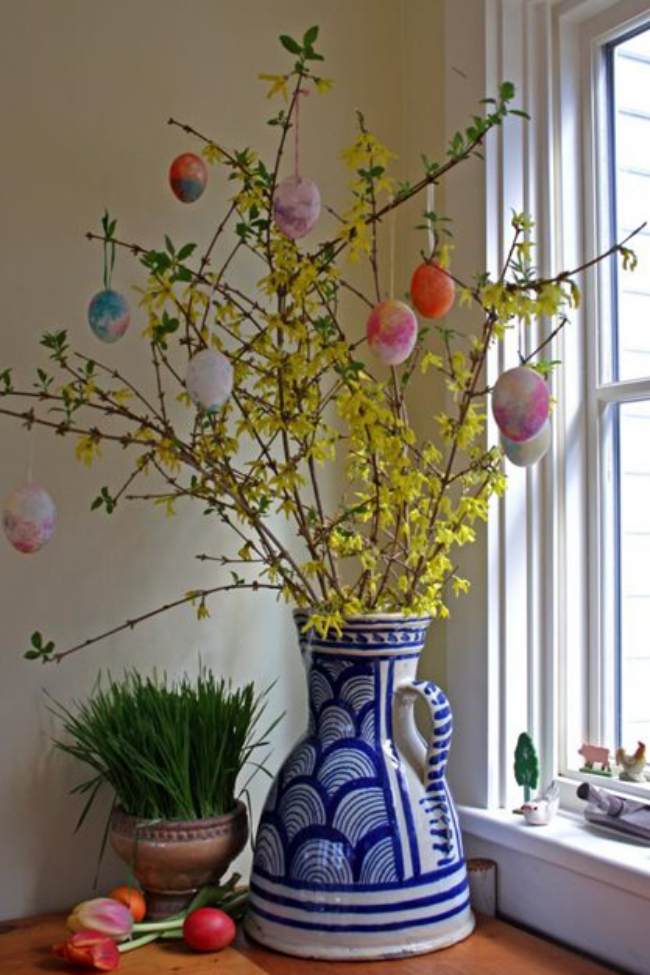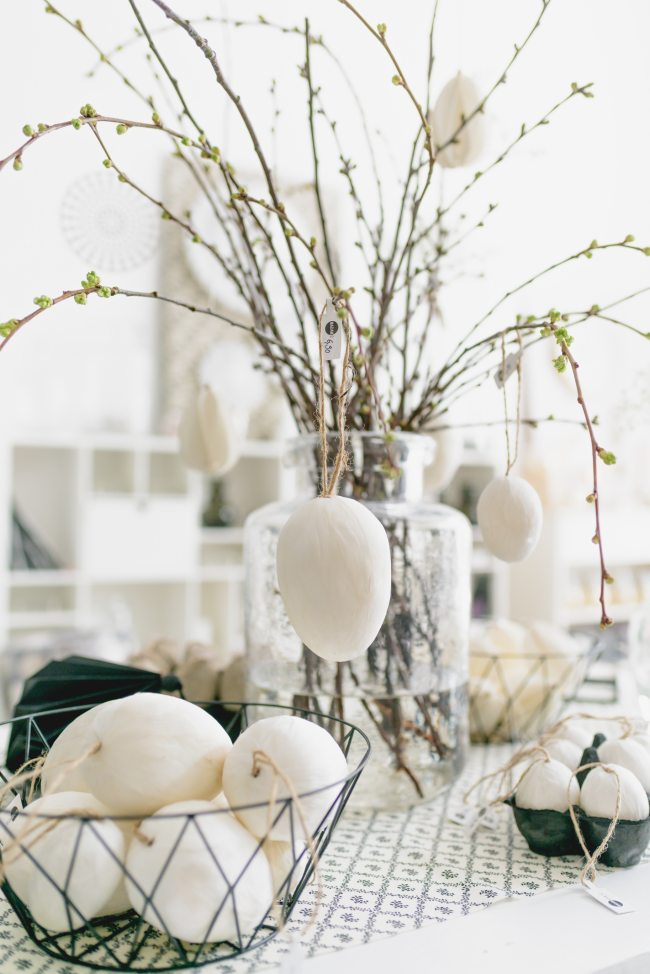Decorating the Easter bush – a traditional decoration idea for Easter
Easter is undoubtedly the second largest family celebration on our calendar after Christmas. Like every year, we want to celebrate it together with friends and close relatives. Although it will be a little different this year due to lockdowns and the corona crisis, it does not mean that we cannot festively decorate our houses and gardens. Yes, you still have 2-3 weeks until Easter, which is why we want to present you great decoration ideas for indoors and outdoors. Today we’re talking about the traditional Easter shrub in the garden. The old custom of decorating a flowering shrub outside with colored eggs has been well preserved in all German-speaking countries. But if you don’t have a garden, you can bring spring into the house with a few flowering branches. Placed in a vase and magnificently decorated with Easter eggs, they make up the Easter bouquet. In the following we would like to explain when and how you decorate an Easter bush or bouquet.
Decorating an Easter bush – this is a widespread custom for Easter.

A small Easter bush also cuts a fine figure inside the vase.

Where does the tradition of festively decorating an Easter bush come from?
First, let’s take a look back at the Easter custom. Easter is the oldest Christian festival, its origins can be found in pre-Christian times. In it, pagan and Christian customs are closely intermingled. From a linguistic point of view, Easter is derived from the name of the Germanic spring goddess Ostra, in whose honor large fires were lit as a symbol of the sun. After the long winter one waited longingly for the bright and warm spring. That is why a flowering shrub was decorated outside with brightly painted eggs. This is how the Osterstrach came into being as a symbol of awakening life. At the same time it stood for a new beginning – for the resurrection of Christ and the reawakening of nature. The beautifully decorated Easter eggs on the Easter bush have remained to this day as a symbol of fertility and new life. Today it is used to decorate indoors and outdoors to celebrate the beginning of spring and the resurrection of Christ.
The Easter bush outside stands for a new beginning in life.

Inside, the Easter bouquet has become an indispensable part of traditional Easter decorations.

How does the old custom live on today?
Today it is customary to decorate a flowering shrub in front of the front door with colored eggs just before Easter. You can blow out eggs yourself and paint them abundantly. However, in most cases plastic eggs are used for this. These are usually painted in the traditional colors of Easter and spring. For example, red stands for the sacrifice of Christ, yellow symbolizes wisdom. White is the ancient symbol for purity and innocence, green stands for a new beginning, blue for firmness in faith. Usually on Maundy Thursday you cut branches in the forest or in the garden. You put these in a vase at home. At room temperature, they should sprout by Easter Sunday. Traditionally, birch, cherry or hazel branches are cut for this, but branches of palm cats and pussy willows, forsythia and corkscrew hazels are also well used. On Holy Saturday these branches are decorated with colored eggs and small rabbits, butterflies or other Easter figures.
The Easter bush immediately turns into a great eye-catcher.

… whether inside or outside.

The largest Easter shrub is in Austria, in Buchkirchen near Wels.

Scroll down now and find more inspiration for your Easter bush! Our editorial team wishes you a lot of fun decorating, a happy Easter and a wonderful spring!
The Easter bush outside is an unmistakable symbol for the coming Easter!

The Easter decoration inside can be colorful!



Pussy willow and flowering cherry branches are often used for Easter decorations.

With decorated branches of forsythia and some Easter grass you can create a wonderful Easter decoration.

Colorful eggs, at least one rabbit and daffodils should not be missing either.

Your Easter bush can also be designed in a minimalist way!



Happy Easter!

Visit the rest of the site for more useful and informative articles!




